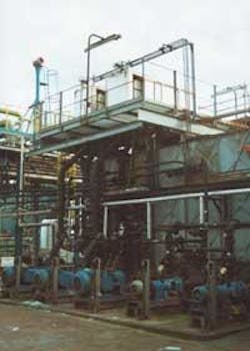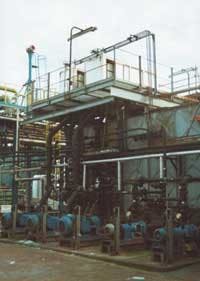Ultrafiltration system recovers lost latex
An ultrafiltration system from Koch Membrane Systems is helping Synthomer Ltd to recover product lost during the latex manufacturing process at its Grimsby plant and to ensure that the feed to the on-site biological treatment plant contains lower levels of COD.
As with most chemical processes, some latex is lost resulting from normal process activities. Previously, it had proved impossible to recover any of this product. The lost product had to be treated in a flocculation and coagulation plant at significant cost to conform to environmental legislation. The sludge from this plant was then tankered off site for disposal, while the treated effluent liquid was discharged into the River Humber.
Synthomer contacted Koch Membrane Systems to reduce these effluent treatment costs and recover lost product. In operation, water containing latex (white water) from the whole site is collected and pumped through a fine filter before a stabilising soap is added to control pH values and adjust surface tension. The white water is then pumped into one of two 100-m3 circulation tanks.
The selected circulation tank is used to charge the circulation loops for the two banks of 160 25-mm-diameter, 3-m-long UF modules. The white water, at an optimum temperature of 25ºC, is circulated through the tubular membranes at a pressure of 3.5 to 4 bar at a feed rate of 25 m3/hr. Cross-flow filtration is used to avoid a build-up of rubber on the membrane surface. The white water and soap are forced through the membrane wall so fluid in the circulation loop becomes more concentrated. To compensate for the removal of water and soap permeate from the circulation loop, a "feed and bleed" system is used, in which fresh white water is continuously fed into the loop under pressure. At the same time, concentrated white water is continuously fed from the loop back to the circulation tank so that the tank rather than the loop becomes the concentrated storage point.
When the total solids content in the circulation tank rises to 25%, its contents are pumped into an agitated storage tank and the second circulation tank assumes the processing role and concentration begins. Recovered latex is fed back to the process stripper to remove residual materials.
Koch Membrane Systems
Stafford, United Kingdom

